Bat speed versus throwing velocity: A preliminary investigation
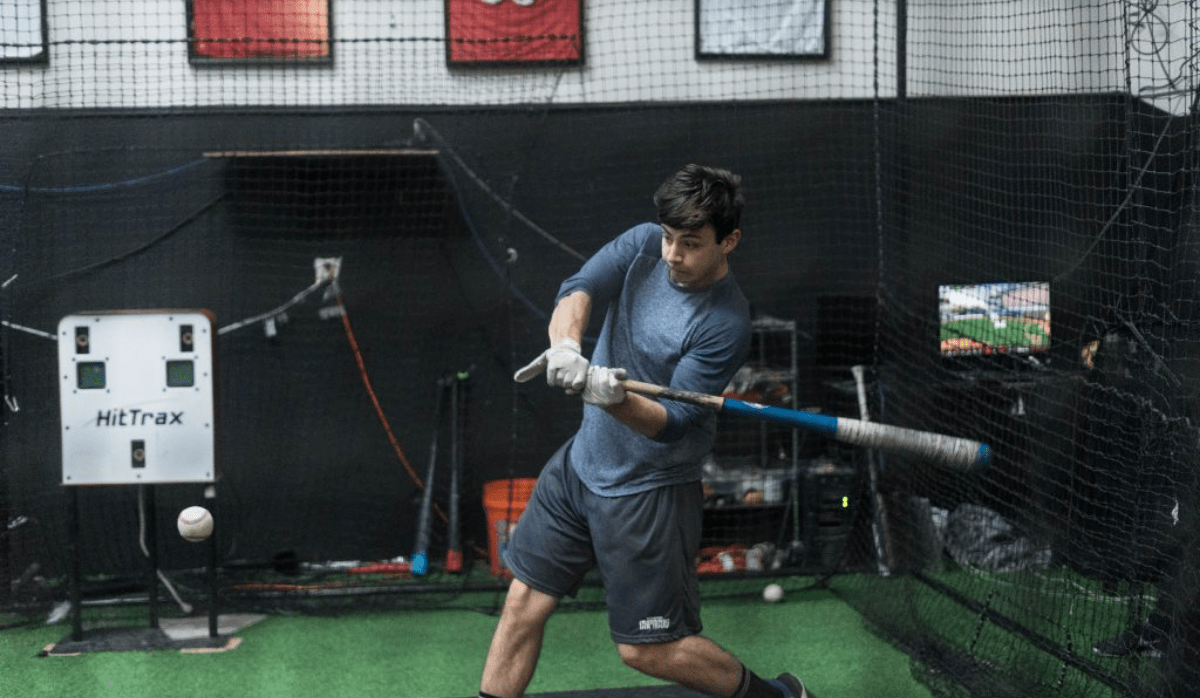
If you can swing a bat at a high velocity, can you throw a ball at a high velocity? Is it really as they say, “rotation is rotation”? Could there be a relationship between bat speed and throwing velocity? This past Fall, we sought an answer to this exact question.
The primary purpose of this investigation was to find the relationship between peak bat speed and high intent throwing velocity. If a strong relationship was found, this could potentially demonstrate that elite throwers are elite rotators in the general sense. Furthermore, a strong relationship may warrant further investigation through the implementation of a bat speed training protocol.
The hypothesis
For this preliminary investigation, we expected to see a strong and direct relationship between average bat speed and throwing velocity off the mound.
What we did
69 total subjects (20 youth, 7 high school, 34 college, and 8 professional athletes) had their peak and average bat speed measured using a Blast sensor off of a stationary tee. After a thorough warm up, all HS level players and up made 10 high effort swings with a ‘-3’ bat (33in, 30oz), while youth athletes made 10 high effort swings with their personal bat ranging between ‘-7’ and ‘-10’. These Blast measurements were then compared to their throwing velocity (the average of three max-effort pitches) off a mound in our motion capture lab. It should be noted that each athlete had their bat speed tested 48 hours before or after their motion capture assessment. Furthermore, youth athletes in this group ranged between 11 and 14 years of age.
What were the results?
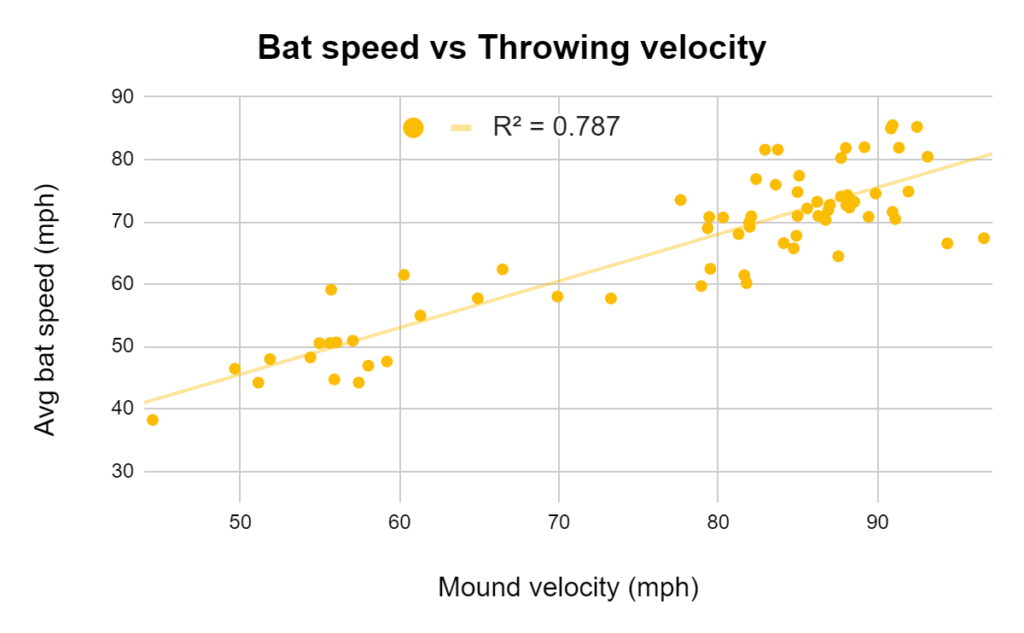
When looking at the results as a whole, including all samples, we can see a pretty strong relationship between average bat speed and throwing velocity off the mound. However, given that this dataset includes athletes of all skill levels, this should not come as a surprise. The older and more physically mature athletes will naturally throw and swing harder than youth athletes.
So, case closed, right? The harder you can swing a bat, the harder you can throw a baseball. Well, not so fast. Based on our dataset, we can separate athletes into three throwing velocity buckets (<80mph, 80 – 86.9, and >87). When we bucket athletes based on their throwing velocity, a different picture begins to take shape.
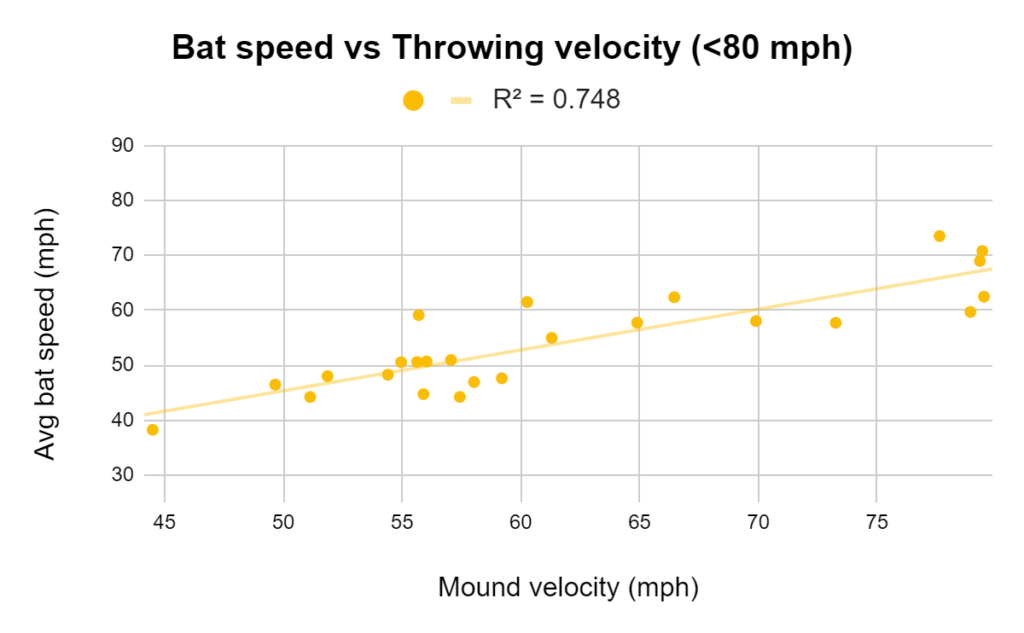
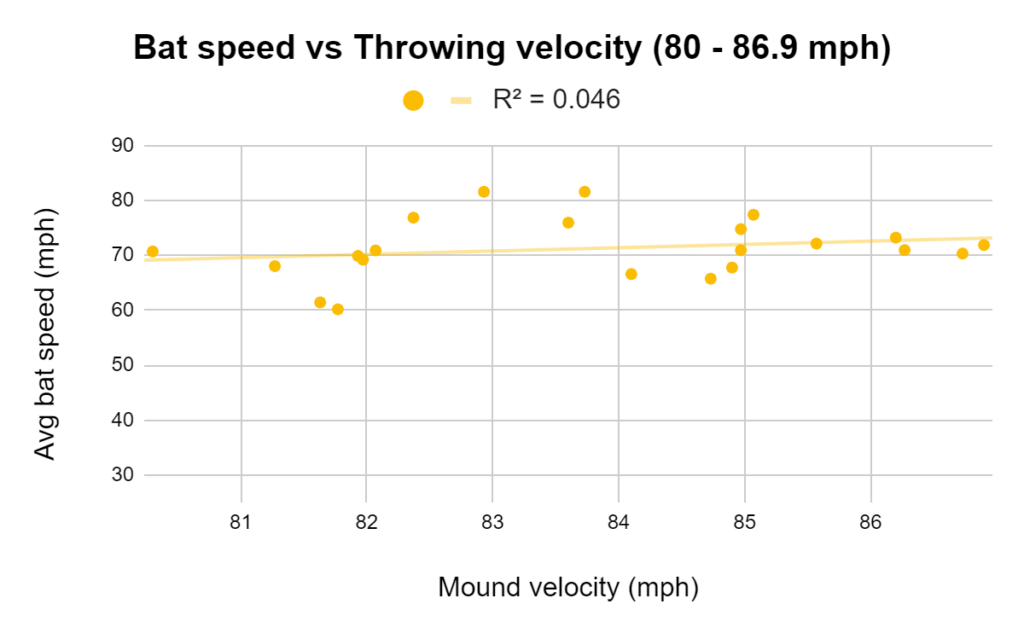
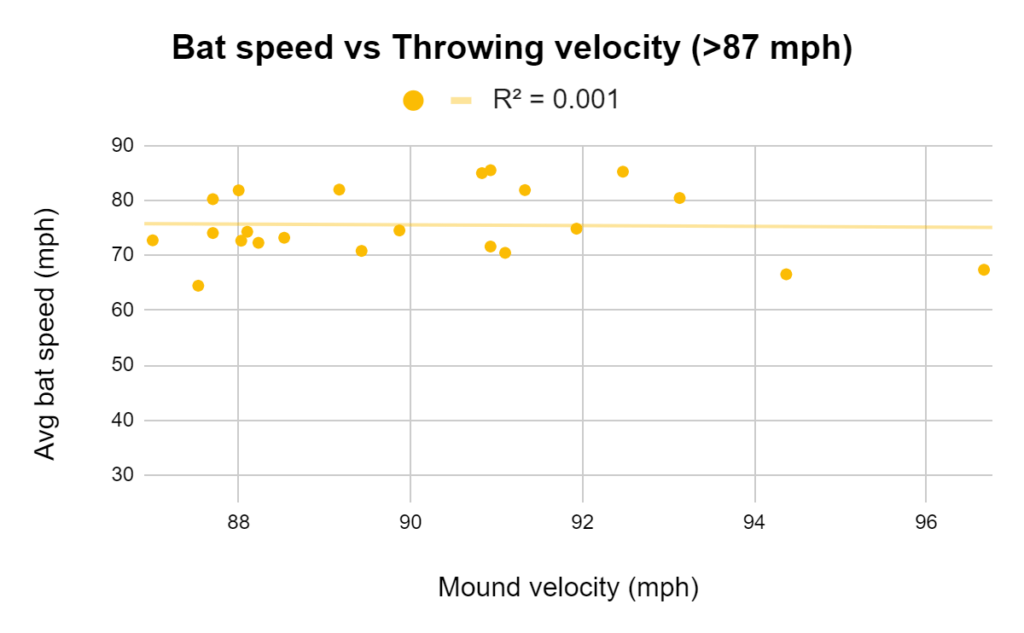
Discussion
Needless to say, we were fairly surprised with our results. The results of this investigation begin to highlight there may be a positive relationship between average bat speed and average throwing velocity, albeit a positive relationship up to a certain skill level. The slower throwing athlete group (< 80mph) displayed a significant relationship between average bat speed and throwing velocity with a r value of .748. From this information, it is reasonable to assume that with lesser skilled athletes an increase in average bat speed may be predictive of an increase in throwing velocity.
This strong relationship begins to wane as skill level increases, however. Results from this investigation showed weak to no correlations for the two harder throwing athlete groups (80-86.9mph and >87mph) displaying a r value of .046 and 0.01, respectively. From this information, it is reasonable to assume that with higher-skilled athletes an increase in average bat speed may not be predictive of an increase in average throwing velocity, or vice versa. One potential reason for this may be that higher average throwing velocities generally require more precise sequencing, ‘sound’ mechanics, high strength levels, and high kinematic velocities via lead leg extension, pelvis rotation, torso rotation, elbow extension, and shoulder internal rotation as compared to hitting and generating bat speed.
What’s next?
Based upon the results of this investigation, there does not seem to be a strong relationship between average bat speed and average throwing velocity for higher-skilled athletes. That being said, I think the results of this investigation do support the idea and importance of “building skills that scale” —a phrase often stated by our Director of Youth Training, Deven Morgan. This phrase serves as the driving force and philosophy behind our Youth Academy teams. Designing a fun, yet competitive training environment that improves raw qualities or skills (ie. bat speed) that translate to many aspects of the game of baseball, and other sports as well.
Comment section